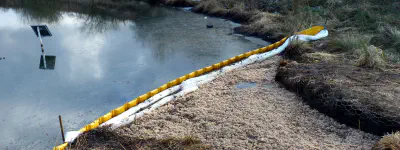Multi-scale habitat selection and spatial analysis reveals a mismatch between the wintering distribution of a threatened population of Taiga Bean Geese Anser fabalis and its protected area

Abstract
Our multi-scale habitat selection and spatial analysis of a threatened population of Taiga Bean Geese Anser fabalis highlights the importance of monitoring and review programmes to determine whether species conservation measures are being implemented at the correct spatio-temporal scales. Aims To undertake a habitat selection and spatial analysis of an internationally important population of Taiga Bean Geese, and quantify the extent to which their foraging range overlaps with a protected area classified to protect their roost sites and foraging areas. Methods A five-year field count dataset was used to quantify foraging habitat selection at the population range scale. In addition, global positioning system (GPS)/ultra high frequency loggers were attached to 12 birds and GPS location data were collected to quantify foraging habitat selection at an individual foraging range scale. Results Generalized linear models predicted that, at the population foraging range scale, Taiga Bean Geese selected agriculturally improved pasture, and this selection was more pronounced at greater distances from public roads. At an individual foraging range scale, compositional analysis revealed that agriculturally improved pasture was significantly selected over all other habitats. There was a substantial mismatch between their individual foraging ranges and the protected area, with less than 35% (median: 21%; range 9.5-31.9%) of their individual full foraging ranges overlapping with the protected area. Discussion Fixed protected areas may fail to fully accommodate the spatio-temporal foraging dynamics of geese, however a more appropriate conservation measure may be the use of flexible management schemes to maintain their foraging areas within and beyond protected area boundaries. This case study highlights the importance of developing dynamic conservation strategies for species liable to undergo range shifts.